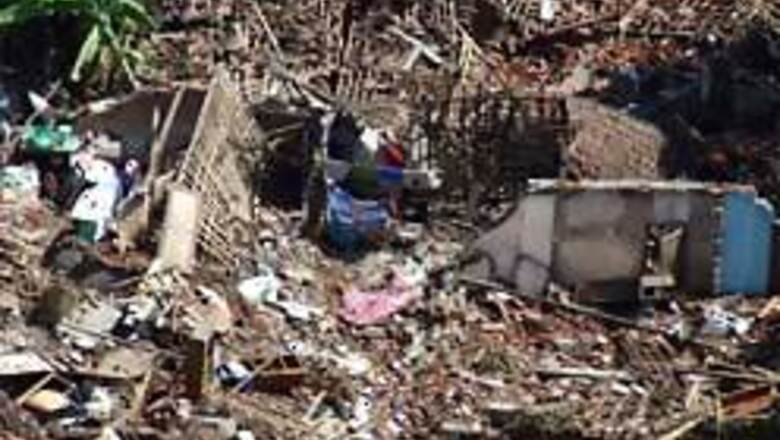
views
Bantul (Indonesia): Relief efforts in a large swathe of Indonesia's earthquake disaster zone picked up pace Wednesday, but for many of the estimated 647,000 people displaced aid was not arriving quick enough and health care remained patchy.
Thousands of women and children lined roads clogged with relief vehicles and curious onlookers, asking motorists for money so they could buy food. Some stood next to a banner that said, "Don't just look. Help."
Saturday's 6.3-magnitude quake on Java island killed more than 5,800 people and injured at least 20,000.
The main hospital in hardest-hit Bantul district remained overwhelmed, with patients cramming corridors or sleeping on pieces of cardboard in the parking lot, and doctors complained of a lack of supplies.
But Jan Egeland, the UN's top humanitarian official, said the crisis appeared to be easing with the arrival of aid workers from more than 20 countries.
"We are now reaching more and more victims," he said from Belgium. "I am getting reports that we are making enormous progress."
The temblor that struck soon after dawn reduced more than 135,000 houses into piles of bricks, tiles and wood in less than a minute, displacing some 647,000 people, said Bambang Priyohadi, a provincial official.
Nearly a third of them now live under plastic sheets close to their former homes or in rice fields or by sides of roads, while the rest are staying with relatives, he said.
Their misery has been compounded by days of on-again off-again rain and blazing sun, with another downfall dousing the region on Wednesday.
Getting food and fresh water to survivors remained a pressing concern, with some $ 5 million needed over the next few months to pay for emergency rations of enriched noodles and high energy biscuits, said the UN World Food Program.
Many villagers complained they were not getting the help they needed.
"All we got today was a half kilogram (one pound) of rice," said Ratimah, 60, who has a family of four to feed. "It's not enough."
But Egeland said the aid effort appeared to be going well overall, with major improvements in coordination among aid organizations and nations since the 2004 tsunami that killed 131,000 people in Indonesia's Aceh province alone.
Conditions had improved at least two hospitals in the area, where parking lots and hallways that had been filled with hundreds of victims in the days after the quake were clear, with most patients now being treated in beds.
The main hospital in Bantul was still overwhelmed, however, with more than 400 patients for just over 100 beds.
"We are short of splints, gauze, even beds," said Dr. Hidayat, the hospital's emergency coordinator, adding that 90 percent of the victims had bone fractures. "The minute we get fresh splits, they are gone."
PAGE_BREAK
Chinese doctors treated patients at a field hospital, while US marines set up their own emergency medical unit in a soccer stadium in Bantul district, home to most of the victims.
"The conditions are tragic, but the guys and gals were absolutely ecstatic to leave at a moment's notice," said 1st Lt Eric Tausch of a US Marine division based in Okinawa, Japan.
Relief teams from Thailand, Malaysia and Singapore were also providing assistance.
The number of dead climbed to 5,846, said Social Affairs Ministry official Jaswadi, who like many Indonesians goes by only one name.
Though international rescue crews have said there was little hope of finding more bodies, a Singaporean search team discovered one corpse at the bottom of a cliff Wednesday, apparently propelled over the edge by the force of the quake, said Maj. Ow Yong Tuck Wah.
The team used jacks and air cushions to free the body from beneath a large boulder, he said.
The man's death had yet to be included in the official death toll.




















Comments
0 comment